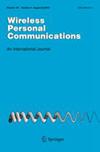增强工业无线传感器网络可信度和可靠性的多层评估系统
摘要
工业无线传感器网络的决策过程在很大程度上依赖于智能传感器提供的信息。要延长网络的使用寿命,就必须确保这些传感器的可信度。此外,传感器节点可靠的数据传输对有效决策也至关重要。信任管理方法在保护工业传感器网络免受内部威胁、提高安全性、可靠性和网络弹性方面发挥着重要作用。然而,现有的信任管理方案往往只关注通信行为来计算信任值,在恶意攻击盛行的情况下可能会导致错误的决策。此外,这些方案往往无法满足 IWSN 的资源和可靠性要求。为了解决这些局限性,本文提出了一种新型混合信任管理方案,称为 "增强可信度和可靠性的多层评估系统"(MASTER)。MASTER 方案在混合架构中采用了一种聚类方法,以减少通信开销,从而以最小的开销有效地检测和缓解各种对抗性攻击,如 Sybil、Blackhole、Ballot stuffing 和 On-off 攻击。这种多因素信任方案在信任估计过程中整合了基于通信的信任和基于数据的信任,旨在提高工业传感器网络的寿命。此外,所提出的 MASTER 方案采用了灵活的加权方案,在直接和推荐(间接)信任评估过程中为最近的交互分配更多权重。这种方法可确保根据特定网络场景定制稳健而精确的信任值。为了有效处理分散的数据并从中获得洞察力,采用了机器学习算法,从而提供了一个合适的解决方案。实验结果表明,与最新的信任模型相比,MASTER 方案在多个关键指标上都表现出色。例如,当由 500 个传感器节点组成的网络中存在 30% 的恶意传感器节点(SN)时,MASTER 方案的恶意行为检测率高达 97%,超过了其他模型。即使在恶意 SN 超过 30% 的情况下,由于每个级别都采用了自适应信任函数,MASTER 方案的假阴性率 (FNR) 仍低于其他模型。当网络中的恶意 SN 达到 50%时,MASTER 方案的恶意行为检测准确率达到 91%,优于其他模型。此外,与其他方案相比,MASTER 方案中 SN 的平均能耗要低得多,这是因为它通过聚类拓扑利用消除了不必要的交易。具体地说,在网络中存在 30% 和 50% 恶意 SN 的情况下,MASTER 方案的吞吐率分别达到了 150 kbps 和 108 kbps,证明了它在具有挑战性的网络场景中的效率。总之,所提出的 MASTER 方案为增强 IWSN 中传感器节点的安全性、可信度和协作性提供了一个全面的解决方案,同时与现有的信任模型相比,在各种指标上都取得了优异的性能。

The decision-making process in Industrial Wireless Sensor Networks heavily relies on the information provided by smart sensors. Ensuring the trustworthiness of these sensors is essential to prolong the lifetime of the network. Additionally, dependable data transmission by sensor nodes is crucial for effective decision-making. Trust management approaches play a vital role in safeguarding industrial sensor networks from internal threats, enhancing security, dependability, and network resilience. However, existing trust management schemes often focus solely on communication behaviour to calculate trust values, potentially leading to incorrect decisions amidst prevalent malicious attacks. Moreover, these schemes often fail to meet the resource and dependability requirements of IWSNs. To address these limitations, this paper proposes a novel hybrid Trust Management Scheme called the Multi-layered Assessment System for Trustworthiness Enhancement and Reliability (MASTER). The MASTER scheme employs a clustering approach within a hybrid architecture to reduce communication overhead, effectively detecting and mitigating various adversarial attacks such as Sybil, Blackhole, Ballot stuffing, and On–off attacks with minimal overheads. This multifactor trust scheme integrates both communication-based trust and data-based trust during trust estimation, aiming to improve the lifetime of industrial sensor networks. Furthermore, the proposed MASTER scheme utilizes a flexible weighting scheme that assigns more weight to recent interactions during both direct and recommendation (indirect) trust evaluation. This approach ensures robust and precise trust values tailored to the specific network scenario. To efficiently process and glean insights from dispersed data, machine learning algorithms are employed, offering a suitable solution. Experimental results demonstrate the superior performance of the MASTER scheme in several key metrics compared to recent trust models. For instance, when 30% of malicious Sensor Nodes (SNs) exist in a network comprising 500 sensor nodes, the MASTER scheme achieves a malicious behaviour detection rate of 97%, surpassing the rates of other models. Even after the occurrence of malicious SNs exceeding 30%, the False Negative Rate (FNR) in the MASTER scheme remains lower than other models due to adaptive trust functions employed at each level. With 50% malicious SNs in the network, the MASTER scheme achieves a malicious behaviour detection accuracy of 91%, outperforming alternative models. Moreover, the average energy consumption of SNs in the MASTER scheme is significantly lower compared to other schemes, owing to its elimination of unnecessary transactions through clustered topology utilization. Specifically, with 30% and 50% malicious SNs in the network, the MASTER scheme achieves throughput rates of 150 kbps and 108 kbps, respectively, demonstrating its efficiency in challenging network scenarios. Overall, the proposed MASTER scheme offers a comprehensive solution for enhancing security, trustworthiness, and collaboration among sensor nodes in IWSNs, while achieving superior performance in various metrics compared to existing trust models.

 求助内容:
求助内容: 应助结果提醒方式:
应助结果提醒方式:


